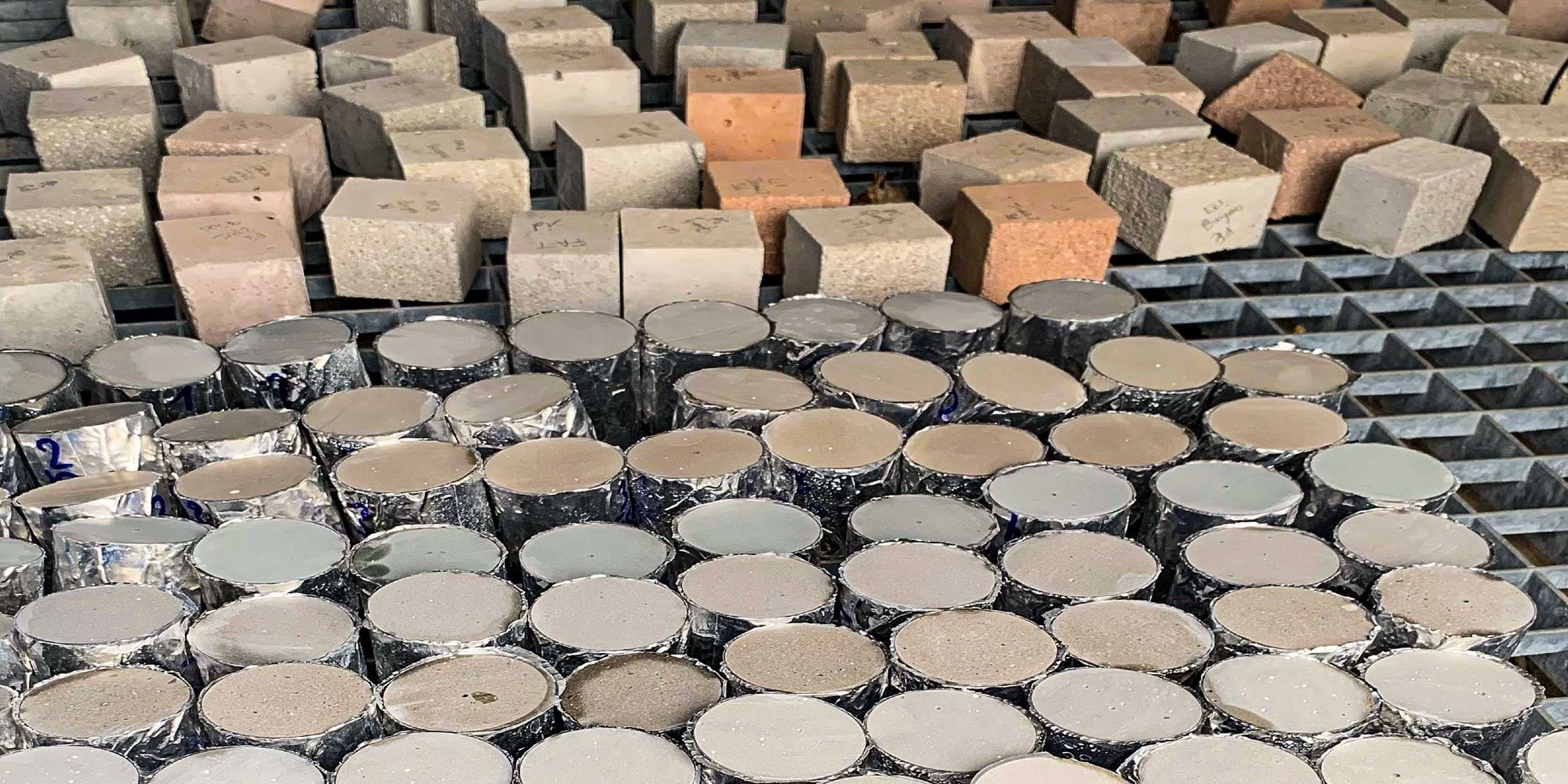Researchers at ETH are actively engaged in developing a low-carbon cement that boasts a substantially reduced embodied CO2 content compared to traditional cement. The Ultra Green Concrete project has the overarching goal of making low-carbon, high-performance concrete widely available.

Image Credit: Franco Zunino
Concrete stands as the most extensively used building material globally, forming the backbone of modern society's infrastructure. While it is partially recyclable and can absorb CO2 during the curing process, the emissions released during its manufacturing surpass the amount that can be reabsorbed later.
Consequently, the concrete industry contributes to approximately 8% of global CO2 emissions, surpassing the combined emissions from the aviation and shipping sectors. In response to this challenge, Franco Zunino, a Senior Scientist at the Institute for Building Materials at ETH Zurich, is advocating for a shift in concrete formulation through the adoption of an “ultra-green concrete” approach.
The Ideal Concrete
Concrete is composed of a blend of cement, aggregates, and water. Conventional cement primarily consists of approximately 95% clinker and 5% gypsum. The production process involves burning limestone and clay into clinker in a kiln heated to 1450 ºC, leading to the inevitable release of CO2 during the chemical decomposition of limestone. The substantial energy demand of the kiln exacerbates the carbon footprint associated with cement production.
EPFL has initiated the Limestone Calcined Clay Cements (LC3) project, with active involvement from Zunino, setting a new benchmark in cement production. The project has devised a cement formulation utilizing 50% clinker along with a blend of calcined clay and limestone, resulting in a noteworthy reduction of approximately 40% in CO2 emissions.
While LC3 has achieved significant strides in cement production, Franco Zunino's Ultra Green Concrete (UGC) project at the ETH-Department of Civil, Environmental, and Geomatic Engineering (D-BAUG) seeks to further enhance environmental benefits by refining the formulation of concrete.
Franco Zunino is pursuing a two-fold strategy for the new green concrete: first, reducing the clinker content, which is the amount of clinker per unit of cement; second, decreasing the ratio of cement in the concrete.
This dual approach provides flexibility in customizing low-carbon concrete compositions based on specific market requirements.
The ideal would be to implement both at the same time; but the individual components are independent of each other. In some markets, it may be difficult to implement both aspects of the dual strategy, as production capacity and infrastructure need to be put in place. However, it is possible to implement at least one of them and still save reduce CO2 emissions.
Franco Zunino, Senior Scientist, Institute for Building Materials, ETH Zurich
Through calculations conducted by Zunino and his team, it has been demonstrated that the CO2 emissions associated with UGC can be decreased from 300 kg per cubic meter to approximately 80–100 kg per cubic meter. Depending on the application, this could result in saving up to two-thirds of CO2 emissions without compromising the material's performance.
While the researcher underscores that there is no inherently climate-neutral or carbon-negative concrete, he advocates for the immediate adoption of this new and more sustainable building material in the industrialized world, emphasizing that there are no excuses for not doing so.
More Cost-Effective Than Traditional Concrete
The concrete industry's hesitancy to adopt greener alternatives may stem from a perceived lack of innovation in this sector. Concrete has been widely embraced for its cost-effectiveness, safety, and user-friendliness. According to Zunino, “green concrete” has the potential to be even more cost-effective than conventional concrete. The proportion of expensive components is reduced, yet the quality and, consequently, the price of the concrete remains consistent. This economic incentive provides a compelling rationale for the widespread adoption of more environmentally friendly materials in the construction industry.
Safety aspects are also important. Anyone who builds a house wants to use a material that ensures it will stand for a hundred years. But we have to ask ourselves whether this makes sense in view of the enormous CO2 emissions involved. Could we instead use a material that meets the structure’s required life cycle but emits significantly less CO2? In a climate-crisis scenario, one tonne of CO2 saved today is more valuable than the same tonne saved in 50 years.
Franco Zunino, Senior Scientist, Institute for Building Materials, ETH Zurich
LC3 Production is Already Underway
Zunino highlights that low-carbon cement exhibits even greater durability than conventional cement. Currently, there are approximately seven large-scale cement plants worldwide employing the LC3 approach. Zunino anticipates that this number will surpass 40 in the coming years. “Demand for concrete will increase in the future. We can offer assistance by developing improved concrete mixtures with a lower cement content and thus still achieve our environmental goals,” Zunino adds. He is convinced that LC3 will be the most widely used type of cement worldwide 10 years from now.
Journal Reference
Zunino, F., 2023. A two-fold strategy towards low-carbon concrete. RILEM Technical Letters. doi.org/10.21809/rilemtechlett.2023.179